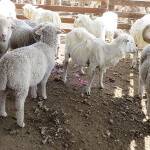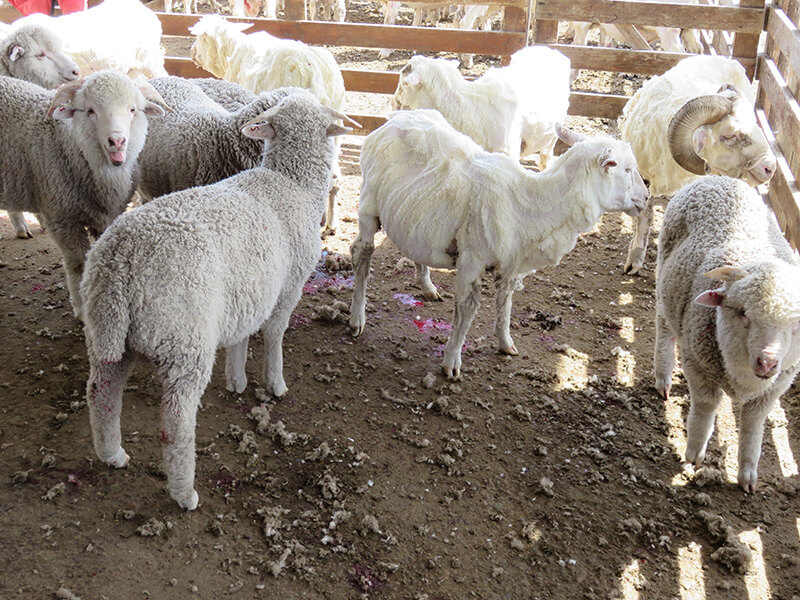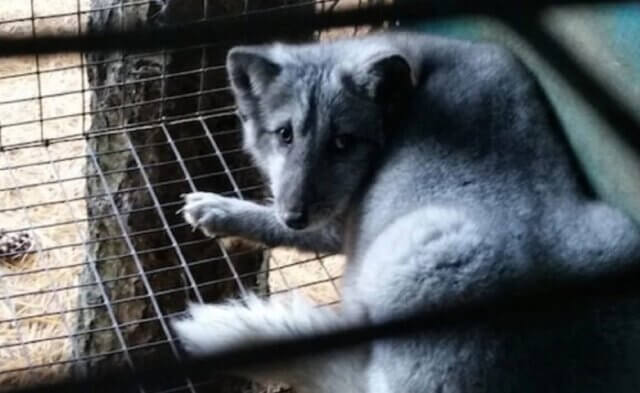
I used to love wool—I mean, really love it. As soon as the temperature dipped, out came my wool skirts and scarves, mittens and sweaters. It made my eyes water and my skin itch, but I still bundled up in the stuff every winter and lamented packing it away again in the spring. On a trip to Tibet years ago, I even searched for hours for a wool cap, the only souvenir I really wanted. But these days, wool is no longer welcome in my closet. Why? Because I now see wool for what it actually is: environmentally destructive and heartbreakingly cruel.
Sheep require lots of land for grazing, and our voracious demand for wool requires lots and lots of sheep—so many, in fact, that they have outstripped the Earth’s ability to sustain them. In Patagonia, Argentina—once second only to Australia in wool production—too many sheep on the land led to soil deterioration, desertification and, eventually, irrevocable damage to the area. In a region of South Africa, sheep and other farmed animals created badlands when they ate their way through all the vegetation. And of course, cutting down trees to make room for grazing leads to decreased biodiversity. Any way you look at it, wool production is stripping parts of the planet bare.
And the sheep fare even worse than the environment. Since shearers are paid by volume, it’s in their financial interests to work as quickly as possible, with no consideration for the sheep’s welfare. On three continents, PETA has exposed shearers who punched and stomped on sheep, throwing them against the hard wooden floor and gouging them with clippers as they raced to shear as many sheep as possible. Often, workers starve sheep and deprive them of water for 24 hours before shearing begins because weak animals are easier to control. Some sheep die from all this abuse.
And “responsibly sourced” wool is just as bad. A recent PETA video exposé of some of these sheep farms in Argentina showed hideous mutilations without any pain relief. One worker hacked off lambs’ tails, leaving bloody stumps as the babies bleated in pain. Another cut notches out of the lambs’ sensitive ears using a tool resembling pliers and neutered a male lamb by putting a tight ring around his scrotum so that his testicles would shrivel up and fall off. Even as a woman, the thought makes me cross my legs and grimace at the agony they endure.
That Tibetan cap turned out to be the last wool purchase I ever made. After learning about all the cruelty and environmental destruction caused by wool production, I said goodbye to wool clothing forever. And in so doing, I learned something else: It is so easy not to wear wool. The variety of sustainable, plant-based materials available is astounding, and they can be found everywhere, from national chains to Fifth Avenue boutiques. Clothing and accessories made out of these vegan fabrics are comfortable, warm and stylish. And, since compassion looks good on everyone, they also make the perfect holiday gift.
Let’s make this a joyous season for all beings. Choose cruelty-free clothing and accessories, and leave wool where it belongs—on animals.





